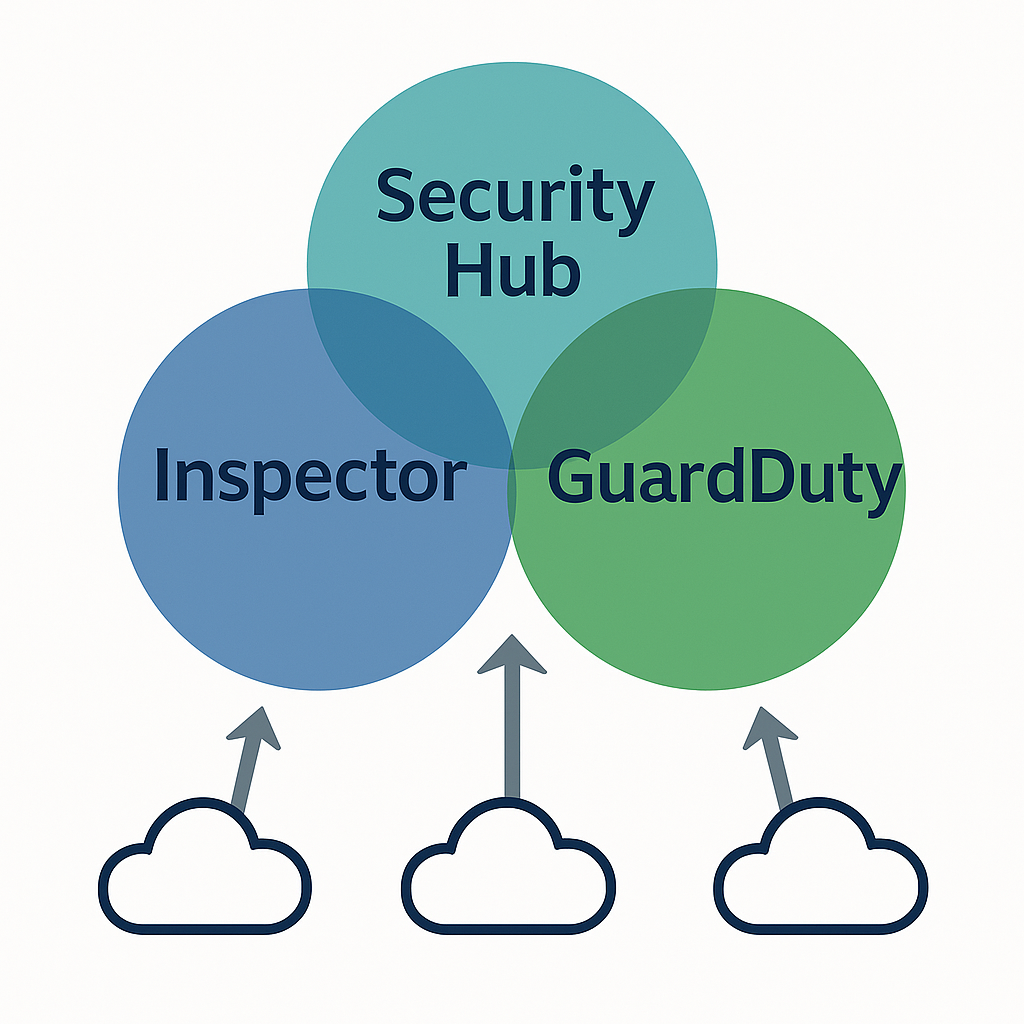AWS Security Hub Deep Dive: Strengthening Security with Centralized Management
Summary
- What is AWS Security Hub?
A managed service that centralizes security findings across your AWS environment and automatically runs compliance checks against CIS benchmarks and AWS best practices. - Key Features
- Automatic aggregation of findings across multiple accounts and regions
- Automated security standard checks (CIS AWS Foundations, PCI DSS, etc.)
- Custom actions & automated remediation
- Seamless integration with other services (GuardDuty, Inspector, Macie, etc.)
- Use Cases
- Generating audit reports for governance requirements
- Automating incident response workflows
- Building a unified security operations dashboard
- Intended Audience
Security leaders, governance/compliance teams, DevOps/SRE engineers, and cloud administrators
1. Introduction: The Need for Centralized Security in AWS
In cloud-native organizations, the proliferation of accounts and regions can lead to inconsistent security configurations and scattered detection logs. Managing individual service findings (e.g., from GuardDuty or Inspector) separately makes it hard to maintain visibility and compliance across the board. AWS Security Hub solves this by providing “one dashboard to see it all and automatically run standard checks,” streamlining and visualizing security operations.
2. What Is AWS Security Hub?
2.1 Service Overview
AWS Security Hub automatically aggregates security findings from multiple AWS accounts and regions into a unified format and dashboard. It also automatically runs built-in standard checks—such as CIS AWS Foundations, PCI DSS, and AWS Foundational Security Best Practices—reporting compliant and non-compliant resources.
2.2 Key Features
- Findings Aggregation & Filtering
- Centralizes findings from GuardDuty, Inspector, Macie, Firewall Manager, and more
- Dynamic filters by severity, resource type, timestamp, etc.
- Standard Security Checks
- Automatically runs all 43 CIS AWS Foundations checks by default
- Supports adding custom standards (PCI DSS, GDPR, HIPAA, etc.)
- Custom Actions
- Attach SNS, EventBridge, or Lambda actions to individual findings
- Build manual or automated remediation workflows
- Dashboard & Reporting
- Real-time compliance dashboard
- Export PDF/CSV reports for audits
3. Setup and Initial Configuration
3.1 Enabling Security Hub
- In the AWS Management Console, go to Security Hub and click Enable.
- Designate one account as the master, then invite member accounts.
- Member accounts automatically send their findings to the master account.
3.2 Configuring Standard Checks
- CIS AWS Foundations
- Enabled by default; runs all 43 checks on schedule
- Additional Standards
- Choose and enable PCI DSS, HIPAA, GDPR, etc., to meet organizational requirements
3.3 Preparing Notification Channels
# EventBridge rule example: Notify SNS on HIGH/CRITICAL findings
Resources:
CriticalFindingRule:
Type: AWS::Events::Rule
Properties:
EventPattern:
source:
- "aws.securityhub"
detail-type:
- "Security Hub Findings - Imported"
detail:
severity:
label:
- "HIGH"
- "CRITICAL"
Targets:
- Arn: arn:aws:sns:ap-northeast-1:123456789012:SecurityAlerts
Id: "SendCriticalAlerts"
4. Practical Use Cases and Operation Patterns
4.1 Multi-Account/Multi-Region Governance
- Scenario: A global organization centralizes security posture across regions and accounts.
- Approach:
- Monitor a unified dashboard in the master account
- Enforce standard checks automatically in member accounts
4.2 Automated Remediation Workflow
- Scenario: SSH port open to the internet on an EC2 instance.
- Workflow Example:
- Security Hub detects “SSH public access” finding.
- EventBridge triggers a Lambda that invokes AWS Config Remediation.
- The unwanted port is closed via AWS CLI command.
4.3 Compliance Report Generation
- Scenario: Monthly audit report for PCI DSS compliance.
- Steps:
- Filter the dashboard by PCI DSS standard.
- Click “Export compliance report.”
- Share the PDF with the audit team.
5. Extended Integrations
5.1 GuardDuty & Inspector Integration
- Security Hub automatically ingests findings from GuardDuty and Inspector, providing a unified view.
- Example: Cross-view threat detections from GuardDuty alongside vulnerability reports from Inspector.
5.2 EventBridge & Lambda Example
# Python Lambda to post Security Hub findings to Slack
import os, json, requests
SLACK_WEBHOOK = os.environ['SLACK_WEBHOOK']
def lambda_handler(event, context):
detail = event['detail']
message = (
f"*Security Hub Finding*\n"
f"Severity: {detail['severity']['label']}\n"
f"Resource: {detail['resources'][0]['Id']}\n"
f"Title: {detail['Title']}"
)
requests.post(SLACK_WEBHOOK, json={'text': message})
return {"status": "ok"}
5.3 SIEM/SOAR Integration
- Stream findings to Splunk, Sumo Logic, or IBM QRadar.
- Orchestrate escalation workflows with SOAR tools (e.g., Demisto, Phantom).
6. Cost Optimization & Best Practices
- Pricing Model: Charged per resource checked and number of standard checks executed.
- Optimization Tips:
- Enable only the standards you need.
- Consolidate member accounts to reduce duplicate checks.
- Use tag-based filters to suppress noise.
7. Conclusion & Future Outlook
AWS Security Hub strengthens security operations through a “visibility + compliance checks + automation” trifecta.
Looking ahead, expect AI/ML-powered anomaly detection and richer custom standards support—continuing its evolution as the next-generation cloud-security platform.
Key Takeaways
- Centralized Management: Aggregate findings across accounts and regions
- Automated Standards: Run CIS and AWS best practices checks automatically
- Seamless Automation: Integrate with EventBridge, Lambda, and SIEM tools
Use this guide to implement robust, efficient security governance with AWS Security Hub!
